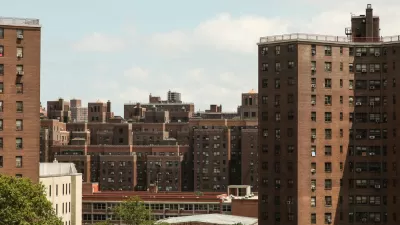Donald Trump's first major economic speech showed significant changes, including how he'd pay for his hefty infrastructure plan. Both he and Hillary Clinton will likely be relying on the same funding source.
It was only last week that Donald Trump told Fox Business that he'd pay for his $500 billion infrastructure plan through borrowing. Like many positions and declarations coming from the billionaire's campaign, it didn't last long.
Trump unveiled his economic plan Monday at the Detroit Economic Club, adopting GOP tax cuts.
"He also says he wants U.S. companies to repatriate their foreign cash, proposing a one-time tax holiday that would allow them to pay just 10 percent to bring their cash home," reports Patti Domm, CNBC executive news editor. "That money would be used to pay for infrastructure."
The tax should sound familiar. Both House Speaker Paul Ryan (R-Wis.), Sens. Barbara Boxer (D-Cali.) and Rand Paul (R-Ky.), and President Obama looked to the same source to fund their transportation reauthorization packages, though they used different forms of it. Ultimately, neither was used to fund the FAST Act.
"[Both Trump and Clinton] could look to the repatriation tax holiday for the $2 trillion stashed overseas to cover some of the costs of their proposed infrastructure spending, according to Dan Clifton, head of policy research at Strategas.
Like the FAST Act approved last December, it's Congress that ultimately writes and approves spending bills.
Clinton also proposed an infrastructure bank to help fund her plan, dissected here.
There are major differences between the two candidate's infrastructure plans, reported Domm on July 28.
Both candidates want to boost infrastructure spending, with the Republicans more focused on roads and bridges than mass transit. Clinton, on the other hand could be more favorable for railroads.
Differences also compared on The Transport Politic via Planetizen.
FULL STORY: Clinton, Trump both would build infrastructure, likely pay for it the same way

Study: Maui’s Plan to Convert Vacation Rentals to Long-Term Housing Could Cause Nearly $1 Billion Economic Loss
The plan would reduce visitor accommodation by 25% resulting in 1,900 jobs lost.

Alabama: Trump Terminates Settlements for Black Communities Harmed By Raw Sewage
Trump deemed the landmark civil rights agreement “illegal DEI and environmental justice policy.”

Why Should We Subsidize Public Transportation?
Many public transit agencies face financial stress due to rising costs, declining fare revenue, and declining subsidies. Transit advocates must provide a strong business case for increasing public transit funding.

Paris Bike Boom Leads to Steep Drop in Air Pollution
The French city’s air quality has improved dramatically in the past 20 years, coinciding with a growth in cycling.

Why Housing Costs More to Build in California Than in Texas
Hard costs like labor and materials combined with ‘soft’ costs such as permitting make building in the San Francisco Bay Area almost three times as costly as in Texas cities.

San Diego County Sees a Rise in Urban Coyotes
San Diego County experiences a rise in urban coyotes, as sightings become prevalent throughout its urban neighbourhoods and surrounding areas.
Urban Design for Planners 1: Software Tools
This six-course series explores essential urban design concepts using open source software and equips planners with the tools they need to participate fully in the urban design process.
Planning for Universal Design
Learn the tools for implementing Universal Design in planning regulations.
Smith Gee Studio
Alamo Area Metropolitan Planning Organization
City of Santa Clarita
Institute for Housing and Urban Development Studies (IHS)
City of Grandview
Harvard GSD Executive Education
Toledo-Lucas County Plan Commissions
Salt Lake City
NYU Wagner Graduate School of Public Service





























